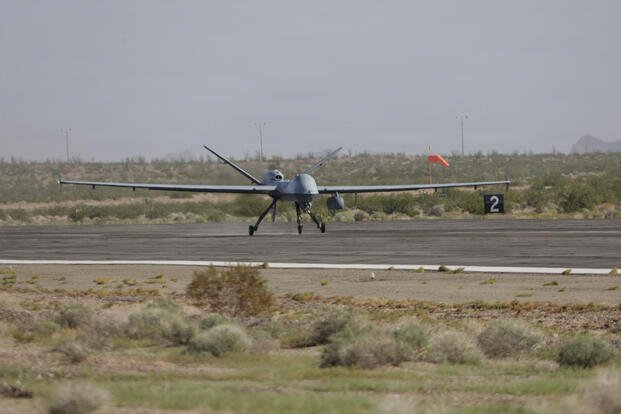The United States is defending its deployment of drones to contested waterways, telling Military.com that China's maritime rhetoric has become "increasingly coercive."
American forces in recent days expanded surveillance in one of the world’s most contested waterways, deploying Marine Corps MQ 9A Reaper drones to the Philippines in disputed water where Chinese ships have repeatedly challenged Manila. The deployment drops U.S. unmanned aircraft straight into a volatile stretch of the South China Sea.
The deployment gives the Philippines around-the-clock eyes on waters where Chinese ships have escalated confrontations and tested how far Manila and Washington will go. It also strengthens the United States’ ability to monitor flashpoints as both countries compete for control of shipping lanes, reefs and shoals. The Reapers are already supporting missions that document, track and push back against hostile behavior.
White House Calls Out China
White House officials say China’s behavior remains a destabilizing force across the region. A senior administration official told Military.com the United States views Beijing’s actions as an urgent concern for allies and partners.

“China’s sweeping territorial and maritime claims in the South China Sea and its increasingly coercive actions to advance them at the expense of its neighbors continue to undermine regional stability and fly in the face of its prior commitments to resolve disputes peacefully,” the official said.
The U.S. remains committed to defending the Philippines under the 1951 Mutual Defense Treaty, the official added, saying, “The United States is and will always be a Pacific naval power."
Marine officials deployed the drones to support surveillance missions over waters claimed by both China and the Philippines. The aircraft give Manila longer-range reconnaissance capability as tensions rise around areas like Second Thomas Shoal and Scarborough Shoal.
“The temporary stationing of unarmed MQ-9As to the Philippines demonstrates mutual commitment to improving the collective maritime security and supports our common goal for a free and open Indo-Pacific,” the Marine Corps said in a statement regarding the deployment, per reports.

The deployment remains temporary and the drones are unarmed, a Marine Corps spokesperson told Defense News.
Military.com reached out to the Marine Corps, Indo Pacific Command, Pacific Fleet and the Philippine government for comment. The U.S. State Department declined to comment.
Contested Waters
The Asia Maritime Transparency Initiative says Chinese coast guard and militia ships have engaged in repeated blocking maneuvers and close intercepts near Philippine outposts at Second Thomas Shoal and Scarborough Shoal.
Analysts describe the encounters as part of an increasingly confrontational pattern across contested waters. U.S. Indo Pacific Command has also reported a rise in unsafe and unprofessional behavior by Chinese forces, and has documented multiple risky intercepts involving U.S. and allied aircraft and ships.
China has also accused U.S. and allied patrols of “escalating tensions,” a claim raised again during a recent regional patrol near the Philippines.

The deployment builds on expanded U.S. access to Philippine bases under the Enhanced Defense Cooperation Agreement. The broader alliance also recently held large scale combat drills, signaling Washington’s sustained commitment to the region. Additional context on regional activity is available from the Asia Maritime Transparency Initiative and Indo Pacific Command, which track maritime and aerial incidents across the theater.
Officials in Washington say they are watching the region closely. The drones are expected to continue flying long endurance missions that help chart militia vessels and naval activity. The flights also allow the Philippines to monitor its own resupply missions to disputed shoals.
















